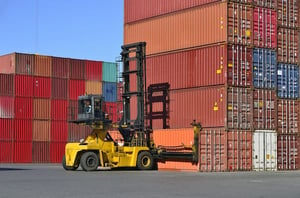 At first, shipping internationally can seem complicated. Not only are you required to round up extra documentation, but you also have to get through the customs process — which must be challenging to navigate, right?
At first, shipping internationally can seem complicated. Not only are you required to round up extra documentation, but you also have to get through the customs process — which must be challenging to navigate, right?
Luckily, customs clearance is much more straightforward than you might expect.
To help shed some light on the topic, here’s a breakdown of what’s involved.
What Paperwork Do You Need?
The first step to ensuring your shipment reaches its destination is to gather all the necessary paperwork. Paperwork for U.S. customs clearance includes:
- Commercial or proforma Invoice
- Bill of lading
- Packing list/cargo details
- Arrival notice
- Material Safety Data Sheet (MSDS — it's only necessary if cargo contains a hazardous material)
Before shipping cargo from the origin port of loading, you’ll need to file an Importer Security Filing (ISF) with U.S. customs including the following details:
- Manufacturer (or supplier) name and address
- Seller (or owner) name and address
- Buyer (or owner) name and address
- Ship-to name and address
- Container stuffing location with container number and seal
- Consolidator (stuffer) name and address
- Importer of record number/foreign trade zone applicant identification number
- Consignee tax ID number(s)
- Country of origin
- A 6-digit commodity Harmonized Tariff Schedule number
To file an ISF, you’ll also need the vessel name and voyage, the bill of lading number under which Automated Manifest System (AMS) will be filed, and the load and discharge ports with an estimated time of sailing (ETS) the load port and estimated time of arrival (ETA) at the discharge port.
What Steps Need to Be Taken?
Your international freight forwarder can coordinate much of the clearance process as long as you provide them with the appropriate documentation and a power of attorney for the designated customs broker. A continuous customs bond will need to be obtained under the importer's tax identification number, which should be in place prior to the shipment leaving the port of export.
(At ATSI, we offer this as a service.)
Here’s what the process will look like:
If operating under a delivery with duty paid (DDP) terms (in which the seller/exporter pays for customs and duties) the buyer is still listed in the process as the final receiver, but the seller/exporter assumes all responsibility and risk.
Once a shipment leaves port, the carrier should provide an arrival notice to the party listed in the bill of lading. This document outlines when the cargo is expected to arrive at the destination port and what will happen next. If the cargo continues on rail or to an inland warehouse, the In Transit (IT) bond information, as well as the final receiving rail ramp or warehouse and its Facilities Information and Resources Management (FIRMS) code, is to be provided to the customs broker.
Cargo may undergo screening via X-ray and may be further inspected by customs at any point along the way. Costs involved in customs exams are considered to be for the party that is responsible for customs clearance.
Keep in mind that even if the customs broker is handling the process on your behalf, you are still responsible for the information and documentation. If you provide incorrect details, you (not the broker) will be culpable — which is why it’s crucial to verify all information ahead of time. A customs broker and international freight forwarder will, however, help streamline the process for you.
What Are Free Trade Zones (FTZs), and What Are Their Benefits?
An FTZ is a special economic zone where cargo and goods can be manufactured, stored, handled or reconfigured and re-exported or imported at a later date. These fall under specific customs regulations and are not subject to customs duty, or offer a delayed payment of duties.
For example, a company may import parts for several dozen wind turbines, build them in an FTZ, and clear them only as they are ready to be shipped to their respective sites.
Similarly, a carnet allows you to import products temporarily without paying duties. Like, for example, if you wanted to demo a product at a trade show. If you sell a product under a carnet, though, duties must be paid.
There are many steps to customs clearance and, for organizations who have never shipped internationally, this can be overwhelming. But by ensuring your documentation is in order and working with international freight shipping companies who offer customs clearance assistance, like ATS International, it will be much easier.



